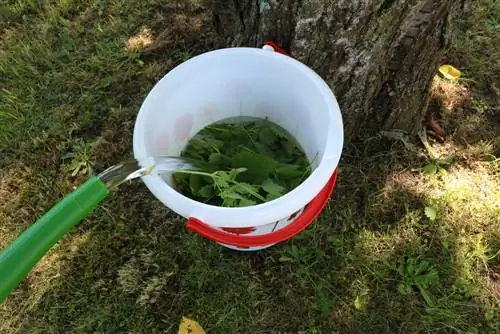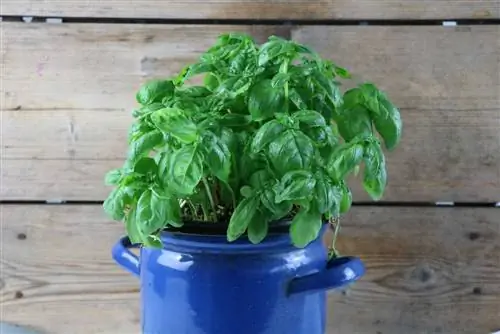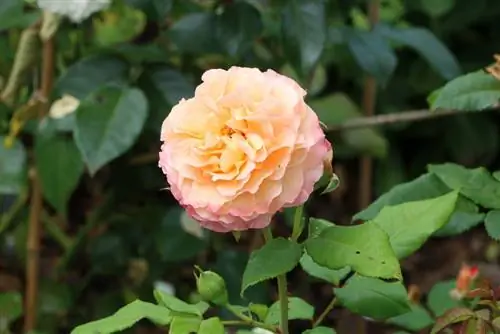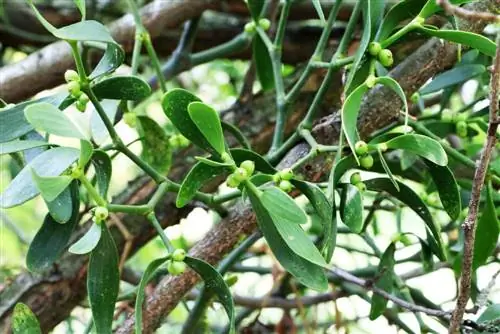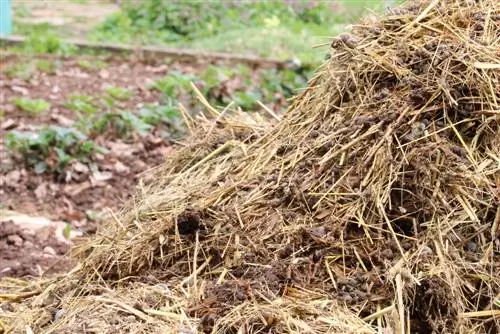- Author admin [email protected].
- Public 2023-12-17 03:39.
- Last modified 2025-01-24 12:45.
The inconspicuous flowers of the nettle are not an ornament and once the frugal plant has established itself, it usually spreads quickly because it makes little demands on the location. Nevertheless, it is worth tolerating the nettle in the garden. In addition to being used as a blood-cleansing tea or as a spring vegetable that stimulates the metabolism after the long winter, it is also ideal for easily producing an effective and fully organic plant fertilizer: nettle manure.
Easy production of nettle manure
Stinging nettle manure is best started in spring, before the nettles start to bloom. Then the entire plants can be used. The chopped plant parts are loosely collected in a suitable container made of wood or plastic and the container is filled with rainwater. Since the fermentation process that follows is very odor-intensive, it is recommended to place the vat slightly away from the garden and cover it. Direct sunlight accelerates the fermentation process. For the following two weeks, the manure is stirred moderately every day to enrich it with oxygen. Stirring too much is counterproductive as it oxidizes many components and causes the ammonia to evaporate. Bubbles on the surface of the water are a sign that the fermentation process is underway. Now fresh plants are stirred in again. After another two weeks, bubbles no longer form, the pungent smell subsides and the nettle manure is ready for use.
Various additives
The manure must neither be too fresh nor too concentrated, otherwise it will be too harsh for the plants and organisms in the soil. In extreme cases, it has the opposite effect: it loses nutrients, causes horniness and pest infestation. This can be prevented by adding biodynamic herbal preparations. Rock dust is a soil additive and a suitable means of supplying the anaerobic bacteria with the necessary minerals so that they bind the ammonia in the manure. To catch the rising vapors from the slurry tank, you can use chopped straw, sawdust or peat moss. They form a floating blanket on the surface of the water and thus prevent unpleasant odors.
Mixing ratio
Depending on what is to be fertilized, the nettle manure is diluted with water in different proportions and used regularly for watering. Collected rainwater is preferable to tap water treated with chlorine, as it usually has less lime. The following mixing ratios must be observed:
- Lawns one in fifty
- Seedlings and young plants one in twenty
- Older plants and heavy feeders one in ten
- Plant pests one to one

To combat pests, it is recommended to pour the diluted manure into a spray bottle and spray the affected parts of the plant directly.
Application
Stinging nettle manure can be produced quickly and inexpensively without much effort. The use of poison and chemicals can be completely avoided. It can also be used in a variety of ways in the garden:
- Sufficient nutrient supply for highly consuming vegetables during the growing season
- Supporting plants in the formation of green leaves
- Effective control of aphids and other plant pests
- Stimulation and acceleration of humus production in compost
The amount of water withdrawn can be replenished all year round, thus ensuring a constant supply of fertilizers and plant protection. In the spring, the leftovers from last year are then distributed undiluted onto the soil to be cultivated.

